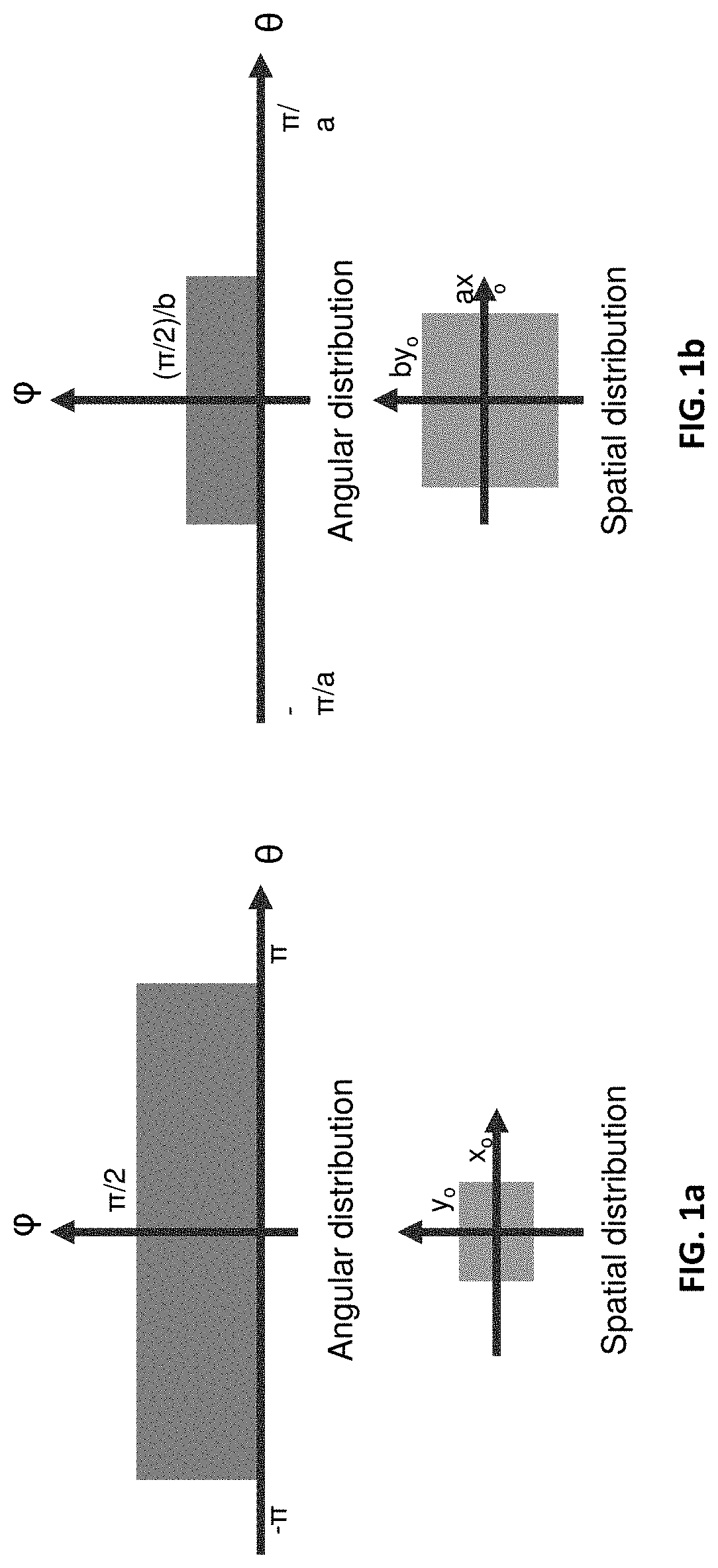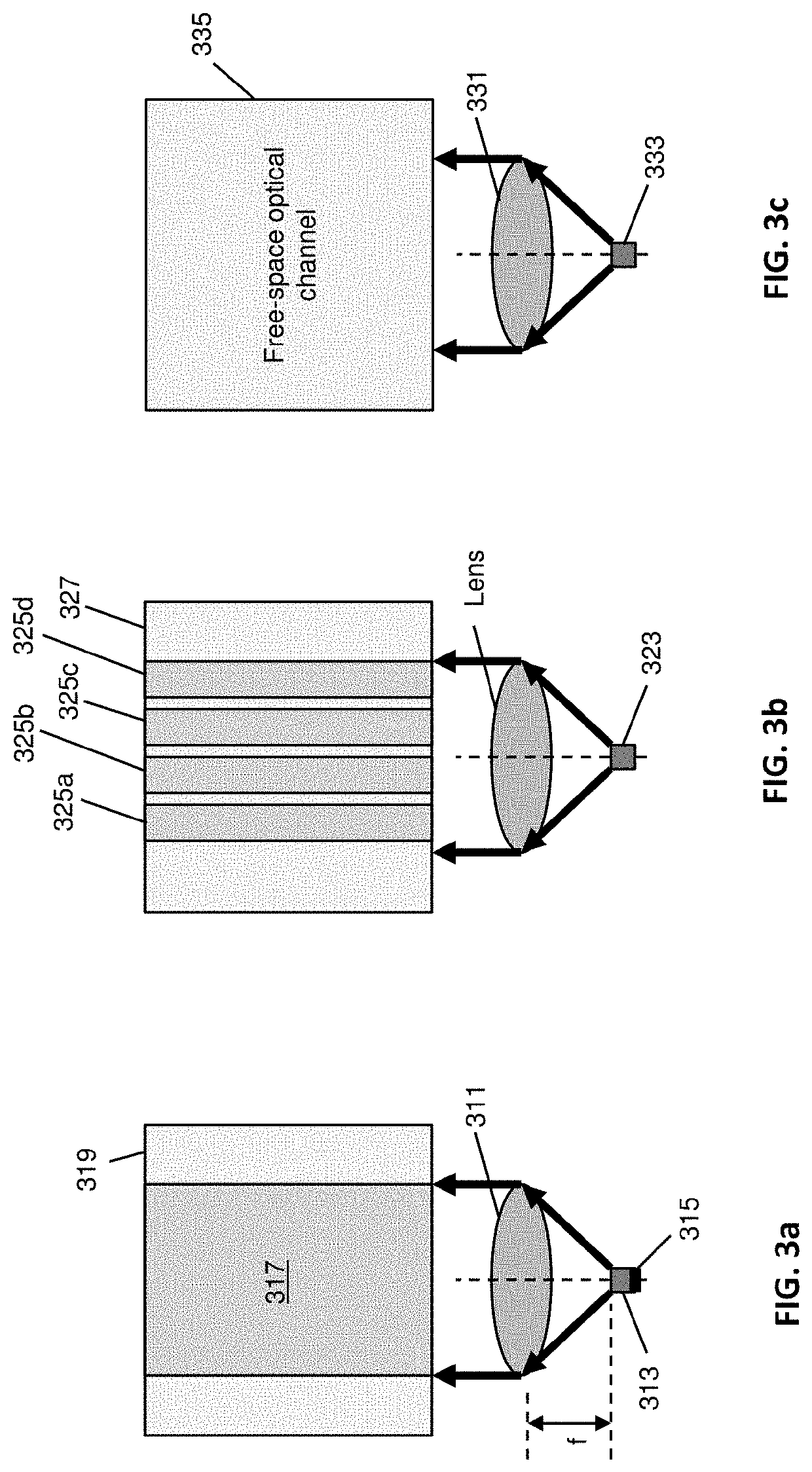Coupling microleds to optical communication channels
a technology of optical communication channel and micro-leds, applied in the field of optical communication system, to achieve the effect of low drive power and high density
- Summary
- Abstract
- Description
- Claims
- Application Information
AI Technical Summary
Benefits of technology
Problems solved by technology
Method used
Image
Examples
Embodiment Construction
0]A microLED is made from a p-n junction of a direct-bandgap semiconductor material. A microLED is distinguished from a semiconductor laser (SL) in the following ways: (1) a microLED does not have an optical resonator structure; (2) the optical output from a microLED is almost completely spontaneous emission whereas the output from a SL is dominantly stimulated emission; (3) the optical output from a microLED is temporally and spatially incoherent whereas the output from a SL has significant temporal and spatial coherence; (4) a microLED is usually designed to be operated down to a zero minimum current, whereas a SL is designed to be operated above a minimum threshold current, which is typically at least 1 mA.
[0051]A microLED may be distinguished from a standard LED by having an emitting region of equal to or less than 20 μm×20 μm. MicroLEDs generally have small etendue, allowing them to be efficiently coupled into small waveguides and / or imaged onto small photodetectors. For conven...
PUM
 Login to View More
Login to View More Abstract
Description
Claims
Application Information
 Login to View More
Login to View More - R&D
- Intellectual Property
- Life Sciences
- Materials
- Tech Scout
- Unparalleled Data Quality
- Higher Quality Content
- 60% Fewer Hallucinations
Browse by: Latest US Patents, China's latest patents, Technical Efficacy Thesaurus, Application Domain, Technology Topic, Popular Technical Reports.
© 2025 PatSnap. All rights reserved.Legal|Privacy policy|Modern Slavery Act Transparency Statement|Sitemap|About US| Contact US: help@patsnap.com



